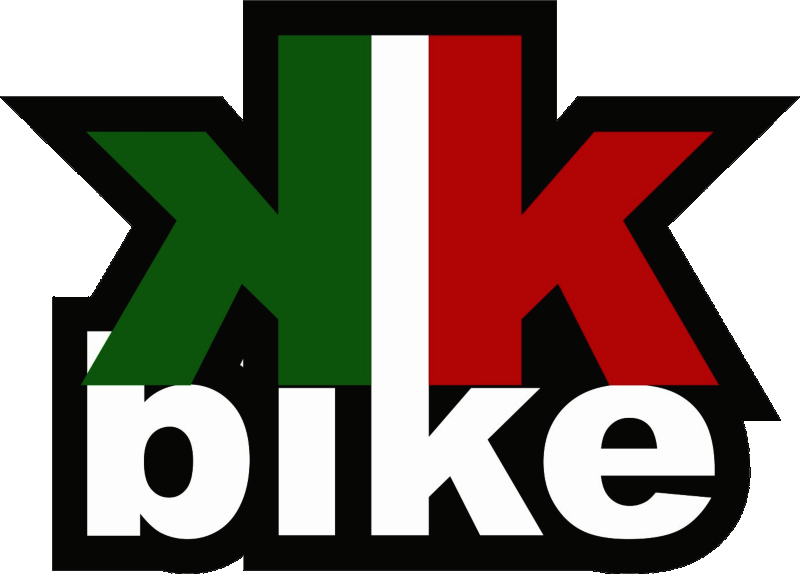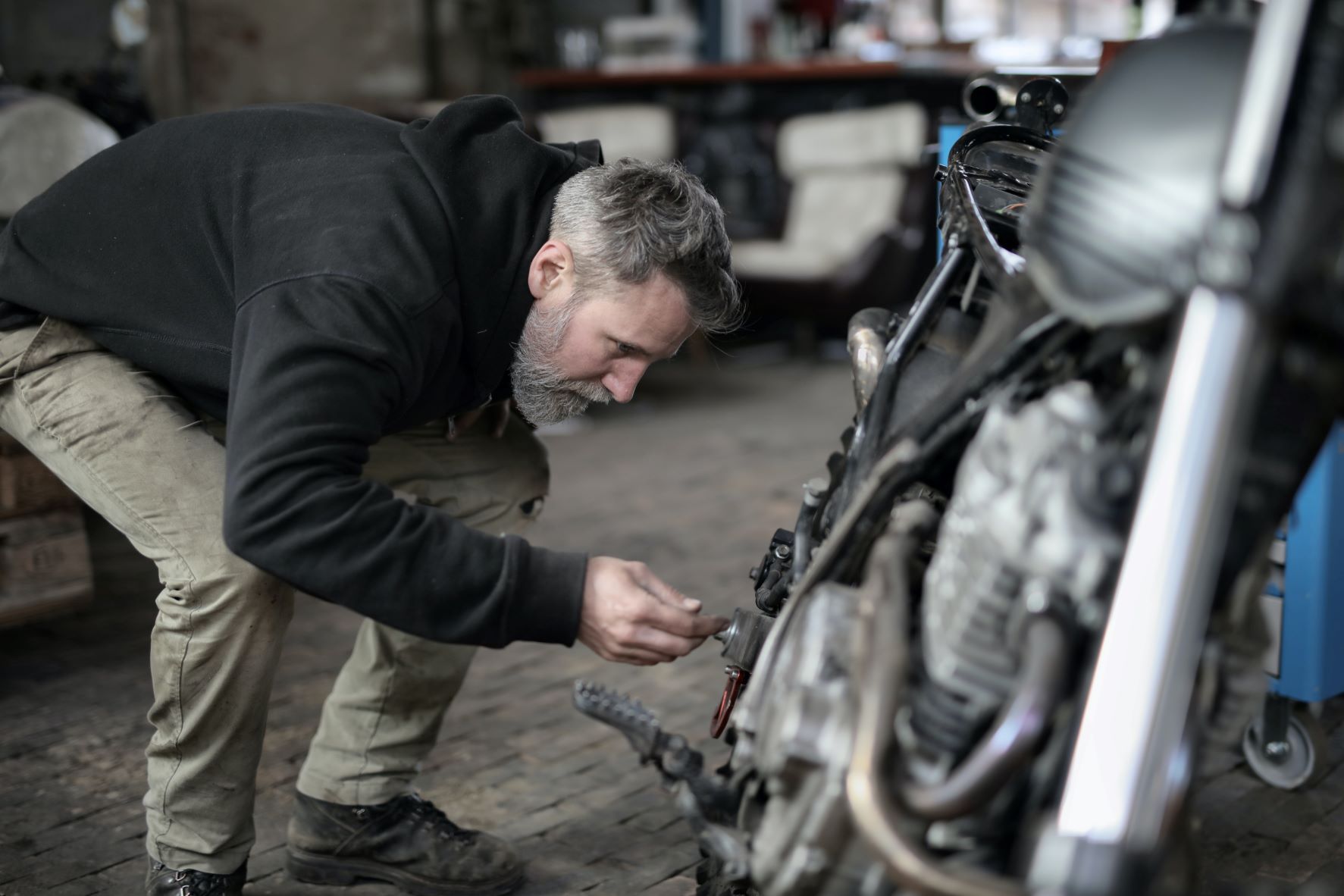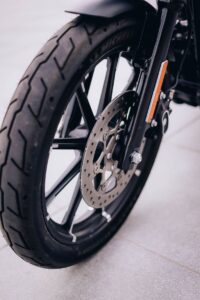How to carry out maintenance on your motorcycle?
Motorcycles' regular inspections and routine maintenance can be carried out from the comfort of your garage.Can I carry out the maintenance of my motorbike by myself?
What tools are needed to carry out the maintenance on the motorcycle?
What is the first thing to do for proper motorcycle maintenance?
Which levels should be checked?
How to perform chain maintenance?
What should be done before riding?
Can I carry out the maintenance of my motorbike by myself? | Will I be able to do it?
Definitely yes, it only takes some basic knowledge to be able to properly maintain your traveling companion. In this article I will just talk about the periodic checks and very few other operations that are useful for traveling with confidence and lengthening the life of your motorbike; the complete servicing process already requires a higher level of expertise, which we gladly leave to the professionals.When should the motorbike be maintained?
I advise you to repeat the steps listed every 700-1000 km; your faithful companion will only benefit from the time you dedicate to it.Where do I start?
From the couch! Make yourself comfortable and read everything in the 'owner's manual' (or service manual) of your motorbike, there you will find all the values required to check the levels (oil, cooling liquid, etc.) and tighten the bolts; it will be a reliable partner for you in carrying out any other necessary operations.What tools are needed to do maintenance on the motorbike? | What tools will I need?
Don't immediately think about having a complete toolbox, rather concentrate on a few good quality tools (those suitable for the size of the inserts on your bike), a few screwdrivers, and little else. Here's what I recommend: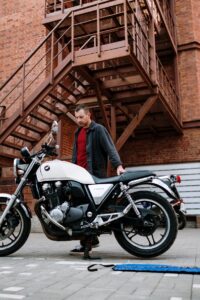 For various settings:
For various settings:
- 4 mixed screwdrivers
- fork wrenches
- Tee sockets wrenches
- socket inserts
- dynamometric spanner
- slide caliber
- multimeter (tester)
For washing and cleaning operations:
- disposable nitrile gloves
- absorbing paper
- motorbike shampoo
- sponge and bucket
- synthetic leather
- de-greaser
- exhaust silencer plug
- brush
- white chain lube
- steel basin
- polyethylene canister
Which is the first thing to be done for a correct motorbike maintenance?
 Definitely the washing; as well as keeping the bike clean, it allows you to observe it well in its various components, helping you to spot loose screws, anomalies in the brake lines, brake pads, tyres, etc.).
Before you start washing it, remember to plug in the exhaust system and protect the air intakes and/or anti-theft device, with plastic and paper.
Now, you can proceed with cleaning the rims, brakes and swingarm; to do this, use degreaser (which must be of a type that does not damage metals or tyres, therefore avoid home remedies and rely on a specific product).
Once the dirt has been removed with the help of the degreaser, you can give the bike an initial rinse. I recommend using the classic rubber hose, it takes longer than the pressure washer but you won't risk damaging the bearings or rubber seals due to an excessively violent flow.
Now, soap the bike with shampoo and sponge and then rinse.
Use synthetic leather on chrome and painted parts to dry them.
Clean the sliding surfaces of the forks with paper and the brake discs with blotting paper and nitro paint thinner.
To dry the most hidden and hard-to-reach parts, just keep the bike running, the heat of the engine will work for you ... however, first, remove the silencer cap and other fasteners that you put on earlier.
Once you have finished drying and before checking the fluid levels, you can take a break and wait for the bike to cool down.
Definitely the washing; as well as keeping the bike clean, it allows you to observe it well in its various components, helping you to spot loose screws, anomalies in the brake lines, brake pads, tyres, etc.).
Before you start washing it, remember to plug in the exhaust system and protect the air intakes and/or anti-theft device, with plastic and paper.
Now, you can proceed with cleaning the rims, brakes and swingarm; to do this, use degreaser (which must be of a type that does not damage metals or tyres, therefore avoid home remedies and rely on a specific product).
Once the dirt has been removed with the help of the degreaser, you can give the bike an initial rinse. I recommend using the classic rubber hose, it takes longer than the pressure washer but you won't risk damaging the bearings or rubber seals due to an excessively violent flow.
Now, soap the bike with shampoo and sponge and then rinse.
Use synthetic leather on chrome and painted parts to dry them.
Clean the sliding surfaces of the forks with paper and the brake discs with blotting paper and nitro paint thinner.
To dry the most hidden and hard-to-reach parts, just keep the bike running, the heat of the engine will work for you ... however, first, remove the silencer cap and other fasteners that you put on earlier.
Once you have finished drying and before checking the fluid levels, you can take a break and wait for the bike to cool down.
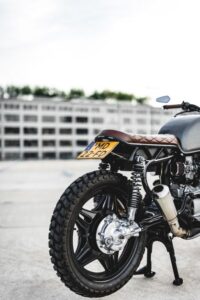 Which levels should be checked?
Which levels should be checked?
To begin with, place the motorbike on the centre stand so that it is perpendicular to the ground.
Engine oil level check
Check how the manufacturer requires this check to be carried out (by referring to the 'Use and Maintenance' booklet). Usually, motorbikes have a sort of sight glass and the oil level must be between the minimum and maximum lines. If the oil level is below the minimum line, it must be filled up (the type of oil is always indicated in the booklet), bringing the level just above halfway up. If there is no inspection window, the check should be carried out with the dipstick.Coolant level check
The check is usually carried out from the recovery tank, next to the radiator, the level should be between the minimum and maximum. Frequent fluctuations of this level can be an alarm bell that should not be underestimated, in such a case go to the repair garage for appropriate checks.Disk brake fluid level check
For the front brake, the check is carried out from the reservoirs on the handlebars while for the rear brake, in the reservoir located above the right foot-peg; in both cases, there is a small notch to check the correct level. If it is lower, before topping up, check the wearing level of the pads which, if worn, cause the oil level in the circuit to decrease, so they must be replaced before topping up. Also, check the brake hoses for cracks and check the production date printed on them and the expiry date on the maintenance schedule. Also, check the tightening of the bolts with a dynamometric spanner.How to perform chain maintenance?
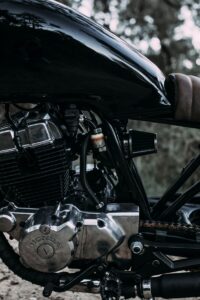 This must be strictly done with the switched-off engine!
Remove the pinion cover and use the brush and white oil to wash the chain, being careful to position the basin in order to collect all residue. Clean it on all sides until you have removed all the dirt.
Dry it with paper and check that it is correctly tightened.
To adjust the tightness, press the chain up and down and mark down the distance between the lowest and highest position so that you can check it from the booklet (or sticker on the swing arm). If it needs adjusting, loosen the wheel nuts with a couple of turns to allow the chain adjusting bolt to increase or decrease the tension (move the wheel backward or forward until you reach the indicated swing value).
Once the adjustment has been completed, check that the wheel is on the axis and that the two bolts are tightened and aligned; you can now move on to lubricate it using the special sprays available on the market, always following the maintenance instructions. It would be advisable to check the transmission chain at least every 1,000 km.
This must be strictly done with the switched-off engine!
Remove the pinion cover and use the brush and white oil to wash the chain, being careful to position the basin in order to collect all residue. Clean it on all sides until you have removed all the dirt.
Dry it with paper and check that it is correctly tightened.
To adjust the tightness, press the chain up and down and mark down the distance between the lowest and highest position so that you can check it from the booklet (or sticker on the swing arm). If it needs adjusting, loosen the wheel nuts with a couple of turns to allow the chain adjusting bolt to increase or decrease the tension (move the wheel backward or forward until you reach the indicated swing value).
Once the adjustment has been completed, check that the wheel is on the axis and that the two bolts are tightened and aligned; you can now move on to lubricate it using the special sprays available on the market, always following the maintenance instructions. It would be advisable to check the transmission chain at least every 1,000 km.
What should be done before riding?
Tyre check
This check should be done at least every 15 days. Keep in mind that tyre pressure varies depending on the outside temperature and humidity. Carefully check the tyres for cracks and the level of wear with the indicators located in the tyre tread grooves. If any of these grooves are at the same level as the outer surface of the tread, you need to replace the tyres.Battery check
Usually, there is no need to test it, a check is necessary after a long period of inactivity, with the multimeter, under normal conditions, we should detect a value of around 12V, which rises to around 14V when the engine is running, otherwise, it should be recharged. To maximize the lifespan of the battery, it is useful to use a battery charger, which keeps the battery at the optimal voltage when the motorbike is inactive for a long period of time. Which battery charger to choose? There are so many on the market, and I understand that choosing the most suitable one can be complicated. I advise you to ask your trusted mechanic who, with his experience, will be able to direct you towards the most suitable product for your needs. Final checks
Final checks
Check with a dynamometric spanner that all screws are tight (reference values are in the owner's manual), check mirrors, footrests, licence plate holders.
Do a light check ( low-beam, high-beam, rear, brake, turning indicators), test the horn. Check that your insurance is currently valid and check the expiration of the inspection on the booklet. Now you are ready to go for a ride, perhaps take the can in which you collected the maintenance residues with you and dispose of it at a waste oil collection centre. Have a good ride! Read more: